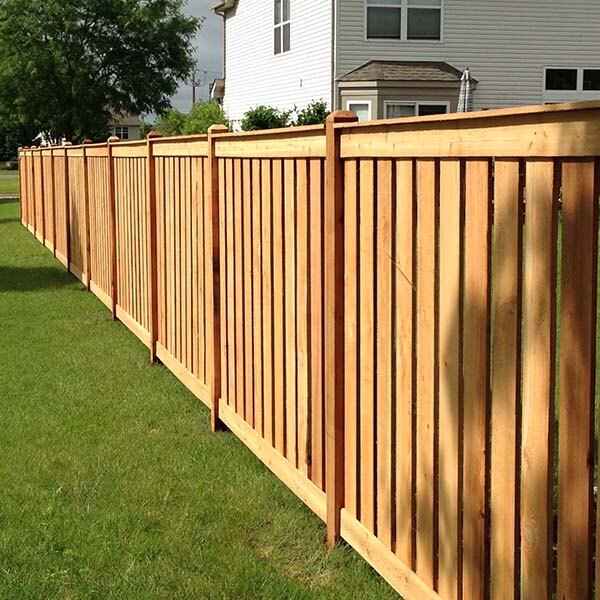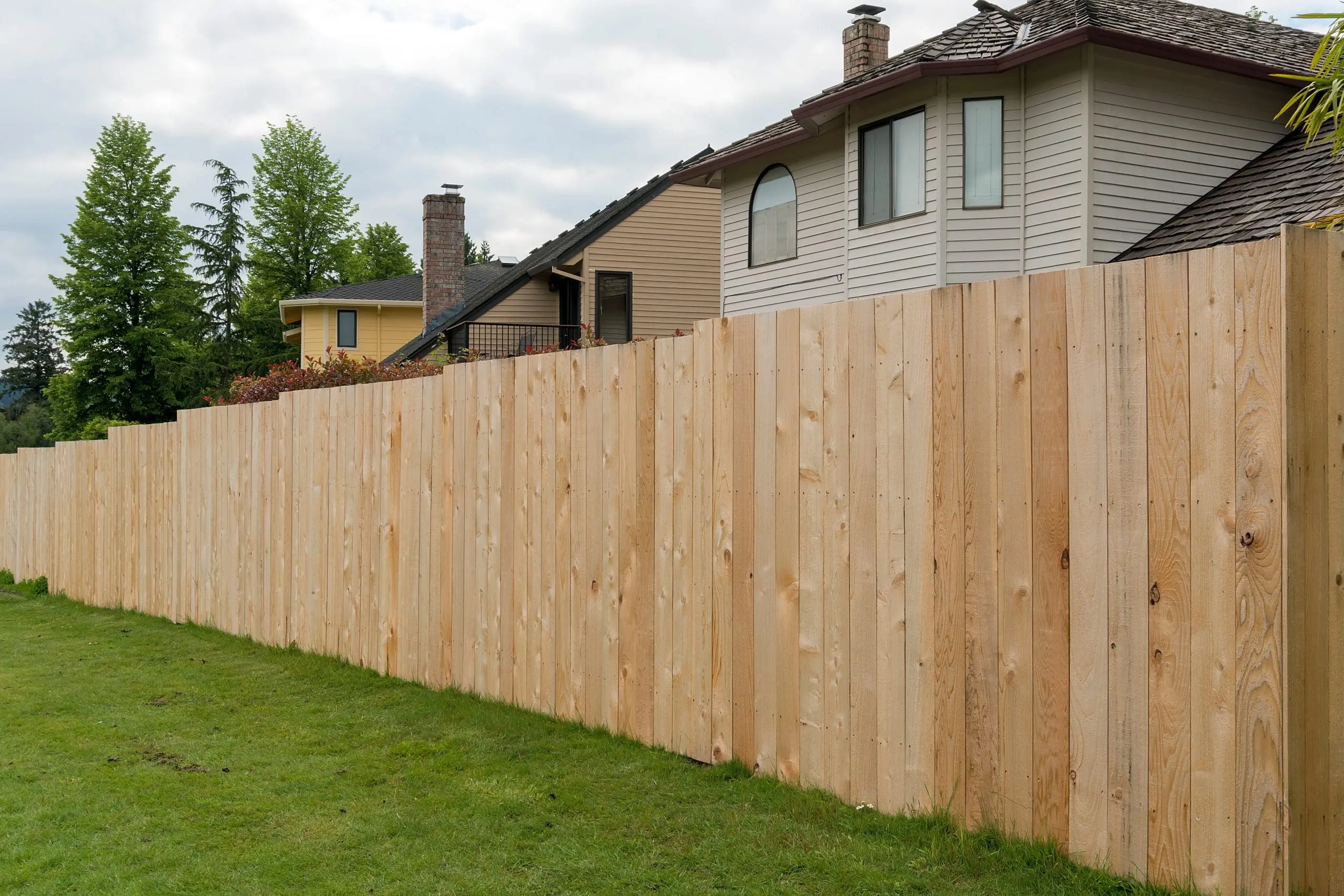Why a Registered Fence Contractor Is Worth the Investment
Why a Registered Fence Contractor Is Worth the Investment
Blog Article
How to Determine Typical Issues That Need Immediate Fence Repair Service
When it involves preserving your fence, it is critical to detect problems before they come to be bigger issues. Consistently looking for indications of decomposing timber, leaning panels, or rust can conserve you money and time in the future. You may not understand exactly how weather and insects can jeopardize your fence's honesty. Let's discover the usual indicators that suggest your fencing requires prompt attention, so you can maintain your property safe and looking its best.
Indicators of Rotting Timber in Wooden Fences
Have you observed your wooden fence looking a bit even worse for wear? It could be time to examine for signs of decomposing wood if so. Take a look at the base of the articles and panels for soft places. That's a clear indicator of rot if you press on the wood and it feels squishy or falls apart. Next off, search for discoloration or dark spots on the timber-- these often signal wetness damage. Focus on any peeling paint or surface, as this can expose the wood to further decay. In addition, a pungent, mildewy odor can show fungal development. Don't forget to evaluate joints and connections; if they hang or crumbling, the wood below is most likely endangered. By catching these indicators early, you can avoid extra considerable damage and keep your fencing standing solid. Routine maintenance is vital to prolonging the life of your wooden fence.
Leaning or Tilting Fence Panels
It's vital to comprehend what caused it if you have actually observed your fencing panels leaning or turning. This problem could indicate underlying architectural damage that requires your focus. Let's explore the typical reasons and the repair work options readily available to get your fence back in form.

Sources Of Leaning Panels
When you see your fence panels leaning or turning, it's usually an indicator of underlying issues that need dealing with. One common cause is insufficient drain; extreme water can erode the dirt around the fence posts, deteriorating their assistance. One more offender can be solid winds or tornados that push against the panels, particularly if they're not properly anchored. Furthermore, the natural settling of soil with time can cause blog posts to move, causing a tilt. Parasites, like termites, can endanger the stability of wooden panels, creating them to lean. Finally, poor setup techniques may cause panels not being safely established, leaving them at risk to leaning under stress. Address these concerns without delay to preserve your fence's integrity.
Indicators of Structural Damage
Seeing turning or leaning fencing panels can be worrying, as these concerns frequently indicate structural damages that needs instant attention. When your fence begins to lean, it may indicate that the articles are changing or that the dirt around them has actually eroded. Pay close interest to voids between panels or blog posts, as these can likewise suggest instability. deck builder. Additionally, look for splits or splintering in the wood, which can compromise the total framework. If you see corrosion or corrosion on steel parts, it could compromise the honesty of the fence. Remember, overlooking these signs can bring about extra extreme damage down the line, so it's necessary to analyze the situation promptly and act prior to it intensifies
Repair Options Available

Corrosion and Corrosion in Steel Fences
If you have a metal fence, you could see rust and rust creeping in over time, specifically if it's exposed to wetness. These issues not just affect the look of your fence yet can likewise compromise its structural stability. To identify rust, seek reddish-brown places or patches, which indicate the steel is oxidizing. Deterioration can spread out swiftly if left neglected, leading and deteriorating the fence to expensive repairs.To tackle corrosion and corrosion, you need to cleanse the affected areas with a wire brush and apply a rust-inhibiting primer. Once the primer dries out, consider repainting the fence with a weather-resistant paint to safeguard it further. Regular maintenance, such as checking for indicators of corrosion and retouching paint as required, will certainly help expand your fence's lifespan. Attending to these issues immediately assures your metal fencing continues to be strong and aesthetically appealing for years to find.
Fractures and Divides in Vinyl Fence

Root Causes Of Plastic Damage
Plastic fencing is preferred for its toughness, yet it can still suffer from cracks and divides because of various factors. One significant reason is severe temperature level fluctuations. When vinyl increases in the heat and agreements in the cold, it can compromise the product over time. Furthermore, direct exposure to severe sunshine can bring about UV destruction, making the plastic brittle. Physical influences, like hefty branches or accidental crashes, can additionally develop cracks. Poor installation or utilizing low-grade products can aggravate these problems. Additionally, age plays a function; older plastic fence is a lot more at risk to damages. Regular evaluations can help you recognize these variables before they bring about significant problems. Take aggressive steps to ensure your fencing remains undamaged and solid.
Repairing Cracks Efficiently
Splits and splits in your vinyl fencing can here be concerning, resolving them quickly can stop more damage and keep the fence's look. Evaluate the dimension of the fracture. For little cracks, a vinyl repair service kit often includes glue that can bond the sides, providing a smooth fix. Clean the area thoroughly before using the adhesive, guaranteeing it adheres correctly. For larger divides, you may need to utilize a plastic spot. Cut the spot to size, use glue around the sides, and press it securely onto the split. Permit it to heal as per the producer's guidelines. Regular upkeep and fast repair work can expand your fencing's lifespan, keeping it looking great for several years to come.
Loosened or Missing Out On Fencing Posts
Loose or absent fencing messages can undermine the security of your whole fence structure. If you observe any kind of posts tottering or leaning, it's necessary to resolve the issue promptly. Look for any kind of indicators of motion, as this can cause more damages gradually. You can conveniently assess the trouble by giving each blog post a gentle shake-- if it feels unstable, it's time to take action.For missing out on posts, you'll need to change them asap to keep your fence's honesty. Make certain they're safely anchored in the ground with concrete or gravel for included security when you install new blog posts. If an article hangs, tighten it by including extra support or driving it deeper right into the ground.Ignoring these issues can bring about larger issues, like voids in your fencing or perhaps full collapse. So, maintain an eye on your articles and stay proactive concerning repairs!
Damage From Climate and Natural Environment
Climate and natural environments can damage your fencing, causing different kinds of damages that call for timely interest. Heavy rainfall can trigger timber to rot, making it unstable and weak. Snow build-up might bend or break panels, while solid winds can uproot fence posts or trigger areas to lean.If you observe fractures or splintering in wood fences, it signifies drying as a result of intense sunlight exposure. Metal fences can rust if protective layers use off, specifically in coastal or moist areas.Inspect your fencing regularly after storms or extreme weather to capture any damage early. Resolving these concerns swiftly can save you from expensive fixings down the line. Don't wait until a small issue transforms right into a significant one; stay positive and keep your fence top form to preserve both performance and aesthetic appeal.
Parasite Problem and Termite Damage
It's important to act swiftly to prevent more damage when you observe signs of insect invasion or termite damage. Seek mud tubes along your fencing or hollow-sounding wood, as these indicate termites are at work. You could additionally see little openings or frass, which is termite droppings looking like sawdust. If you detect any one of these indicators, it's time to assess the damage.Don' t delay up until it's far too late; bugs can compromise your fencing's stability. Inspect the surrounding location for beetles or ants, as they may be adding to the issue. If you suspect a problem, take into consideration contacting a bug control expert to verify and deal with the issue.Repairing or changing affected sections of your fencing promptly not just recovers its toughness yet additionally prevents bugs from spreading out better. Remain watchful to keep your building safe and pest-free.
Often Asked Inquiries
Exactly how Frequently Should I Evaluate My Fence for Damage?
You must evaluate your fence at least two times a year, ideally during springtime and fall. Normal checks assist you detect damages early, conserving you money and time on repair services while maintaining your property's appearance and safety.
Can I Fix a Fencing Myself or Employ a Professional?
You can most definitely fix a fencing yourself if you have the right tools and skills. Nevertheless, working with a professional warranties quality work and conserves you time, especially for intricate repair services or considerable damages.
What Equipment Are Required for Basic Fencing Repairs?
For fundamental fencing repair work, you'll require devices like a hammer, screwdriver, pliers, a saw, a level, and gauging tape. deck builder. Depending on the repair, you could additionally need nails, screws, or replacement boards
Just How Much Does Fencing Fixing Generally Expense?
Fencing repair work expenses vary extensively, yet you can anticipate to pay between $200 and $1,500 depending on materials, labor, and extent of damages. It's clever to obtain several quotes for the very best bargain.
When Is the most effective Time of Year for Fence Fixes?
The very best time for fencing fixings is throughout mild climate, normally in springtime or early fall. You'll avoid severe temperature levels, making it less complicated to function and guaranteeing the materials set appropriately for lasting durability (deck builder). Discovering tilting or leaning fence panels can be startling, as these problems frequently indicate architectural damage that requires prompt focus. Loosened or absent fence messages can undermine the stability of your entire fencing structure. Snow build-up could bend or damage panels, while solid winds can uproot fencing messages or create areas to lean.If you notice splits or splintering in wood fences, it's an indication of drying out due to extreme sunlight exposure. Metal fencings can rust if safety coatings put on off, specifically in coastal or moist areas.Inspect your fence regularly after storms or extreme weather condition to capture any type of damages early. Fencing repair expenses differ extensively, however you can expect to pay between $200 and $1,500 depending on materials, labor, and degree of damages
Report this page